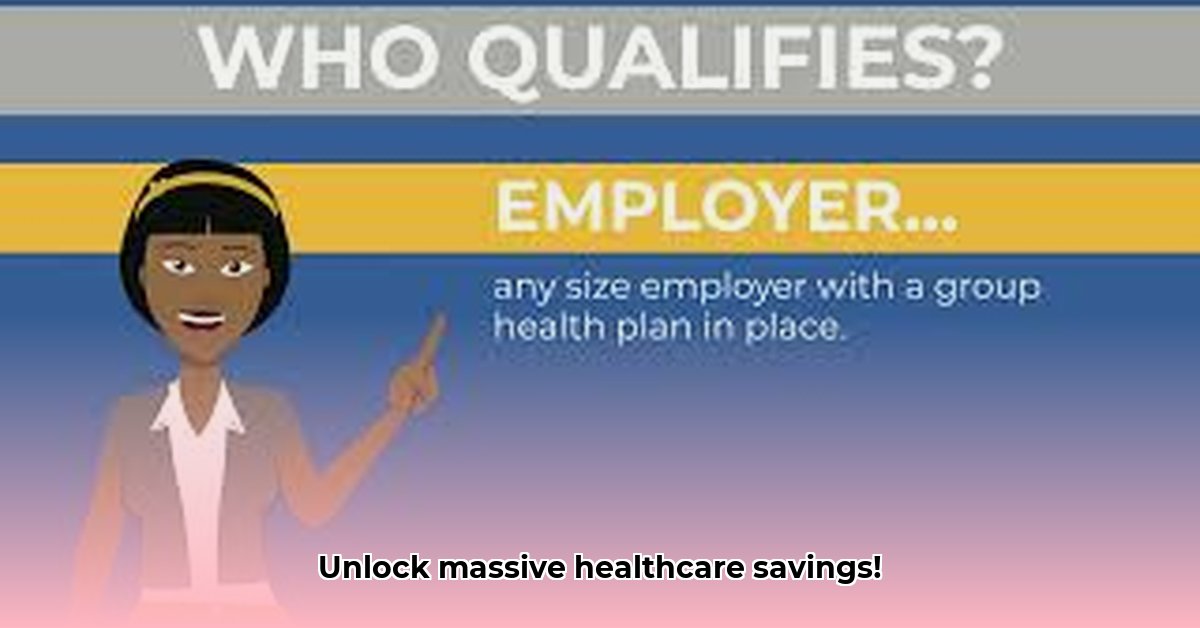
Understanding Excepted Benefit Health Reimbursement Arrangements (EBHRAs)
Ready to optimize your healthcare spending and potentially reduce your tax burden? Excepted Benefit Health Reimbursement Arrangements (EBHRAs) offer a powerful solution for both employers and employees. This guide provides actionable steps to effectively utilize EBHRAs and maximize their benefits.
What is an EBHRA?
An EBHRA is an employer-funded account that reimburses employees for specific, limited healthcare expenses, known as "excepted benefits." Unlike a Health Savings Account (HSA) which covers a broader range of medical expenses, EBHRAs focus on services like dental checkups, vision care (eye exams and glasses), and sometimes short-term limited-duration insurance (STLDI). These are often expenses not fully covered by traditional health insurance. The IRS sets an annual limit on contributions (currently $1,800 for 2023, subject to annual inflation adjustments).
How Does an EBHRA Work?
Your employer contributes a set amount annually to your individual EBHRA account. You use your own funds to pay for eligible healthcare costs upfront and then submit claims for reimbursement from your EBHRA account. Reimbursements are tax-free for both you and your employer. Think of it as a dedicated pre-paid card specifically for vision, dental, and other approved services. Isn't this a good way to save?
Who Benefits from an EBHRA?
EBHRAs provide advantages for both employers and employees. Companies can offer a valuable employee benefit without the significant cost and complexity of comprehensive health plans. Employees gain more control over their healthcare spending and can target their EBHRA funds to specific needs.
An EBHRA could be particularly advantageous if:
- You have comprehensive health insurance covering major medical expenses.
- You prioritize vision and dental care.
- You desire more control over healthcare spending decisions.
- You seek tax-advantaged ways to manage specific healthcare costs.
EBHRA vs. Other Healthcare Options
Understanding how EBHRAs compare to other healthcare savings options is crucial for effective planning. Below is a comparison:
| Feature | EBHRA | HSA | Flexible Spending Account (FSA) |
|---|---|---|---|
| Funding Source | Employer-funded | Employee-funded | Employee-funded (employer match possible) |
| Covered Expenses | Excepted benefits (vision, dental, etc.) | Qualified medical expenses (broader range) | Qualified medical expenses (broader range) |
| Unused Funds Rollover | Potentially (depends on plan specifics) | Usually rolls over year to year | Often a "use it or lose it" situation |
| Tax Advantages | Contributions and reimbursements are tax-free | Contributions tax-deductible, withdrawals tax-free | Contributions tax-deductible, withdrawals tax-free |
A Step-by-Step Guide to Utilizing Your EBHRA
Maximize your EBHRA benefits by following these simple steps:
Review Plan Details: Thoroughly review your employer-provided EBHRA plan documents. Understand eligibility criteria, contribution limits, and approved expenses. Don't hesitate to contact your HR department for clarification.
Maintain Detailed Records: Keep meticulous records of all eligible expenses. Digital tools can streamline this process, assisting in organizing receipts and tracking spending.
Submit Claims Promptly: Follow your employer's established procedures for submitting reimbursement requests. Include all necessary documentation to ensure timely processing.
Monitor Account Balance: Regularly check your EBHRA account balance to stay informed about your remaining funds and prevent unexpected shortfalls.
Maximizing EBHRA Benefits and Minimizing Tax Liability
Effective EBHRA utilization hinges on proactive planning and careful record-keeping. Here's how to optimize your savings while staying compliant:
Identify Eligible Expenses: Carefully review your plan documents to pinpoint which healthcare expenses qualify for reimbursement. Create a categorized list of eligible expenses.
Proactive Scheduling: Don't delay necessary healthcare services. Schedule dental cleanings, eye exams, and other eligible procedures early in the plan year.
Meticulous Record-Keeping: Maintain meticulous records of all eligible expenses, including receipts and supporting documentation. This ensures accurate claim submissions and minimizes potential issues.
Budget Effectively: Remember the annual contribution limit. Creating a healthcare budget ensures you stay within the limit and utilize the funds effectively.
Leverage Rollovers: If your plan allows for rollovers of unused funds, take advantage of this feature to maximize your benefit.
Open Communication: Contact your HR department or benefits administrator immediately if any questions or uncertainties arise.
Risk Assessment Matrix
While EBHRAs offer substantial advantages, potential challenges exist:
| Potential Issue | Mitigation Strategies |
|---|---|
| Non-compliance with regulations (ERISA/HIPAA) | Consult with legal counsel specializing in employee benefits to ensure full compliance. |
| Misunderstanding of plan details | Carefully read plan documents. Leverage HR resources for clarification. |
| Changes in Healthcare Costs | Periodically review your plan and budget, adjusting as needed to accommodate cost fluctuations. |
| Lost or misplaced receipts | Use digital tools to store and organize receipts; keep a comprehensive, organized system. |
By understanding the workings of EBHRAs, proactively managing expenses, and staying informed about regulations, both employers and employees can achieve significant healthcare savings and tax efficiencies. Remember, careful planning, coupled with clear communication with your HR department, is key to unlocking the full potential of an EBHRA.